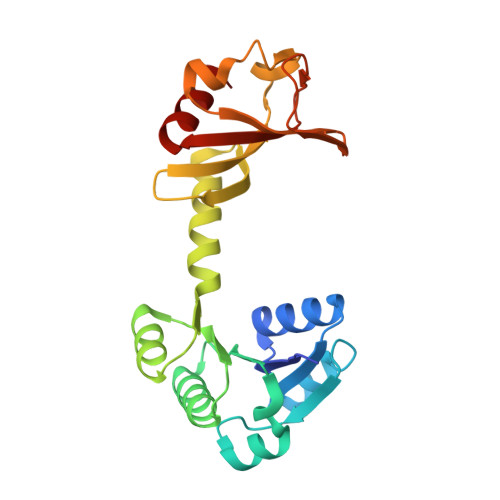Activation of a nucleotide-dependent RCK domain requires binding of a cation cofactor to a conserved site.
Teixeira-Duarte, C.M., Fonseca, F., Morais Cabral, J.H.(2019) Elife 8
- PubMed: 31868587
- DOI: https://doi.org/10.7554/eLife.50661
- Primary Citation of Related Structures:
6S2J, 6S5B, 6S5C, 6S5D, 6S5E, 6S5G, 6S5N, 6S5O, 6S7R - PubMed Abstract:
RCK domains regulate the activity of K + channels and transporters in eukaryotic and prokaryotic organisms by responding to ions or nucleotides. The mechanisms of RCK activation by Ca 2+ in the eukaryotic BK and bacterial MthK K + channels are well understood. However, the molecular details of activation in nucleotide-dependent RCK domains are not clear. Through a functional and structural analysis of the mechanism of ATP activation in KtrA, a RCK domain from the B. subtilis KtrAB cation channel, we have found that activation by nucleotide requires binding of cations to an intra-dimer interface site in the RCK dimer. In particular, divalent cations are coordinated by the γ-phosphates of bound-ATP, tethering the two subunits and stabilizing the active state conformation. Strikingly, the binding site residues are highly conserved in many different nucleotide-dependent RCK domains, indicating that divalent cations are a general cofactor in the regulatory mechanism of many nucleotide-dependent RCK domains.
- Instituto de Investigação e Inovação em Saúde (i3S), Universidade do Porto, Porto, Portugal.
Organizational Affiliation:

















